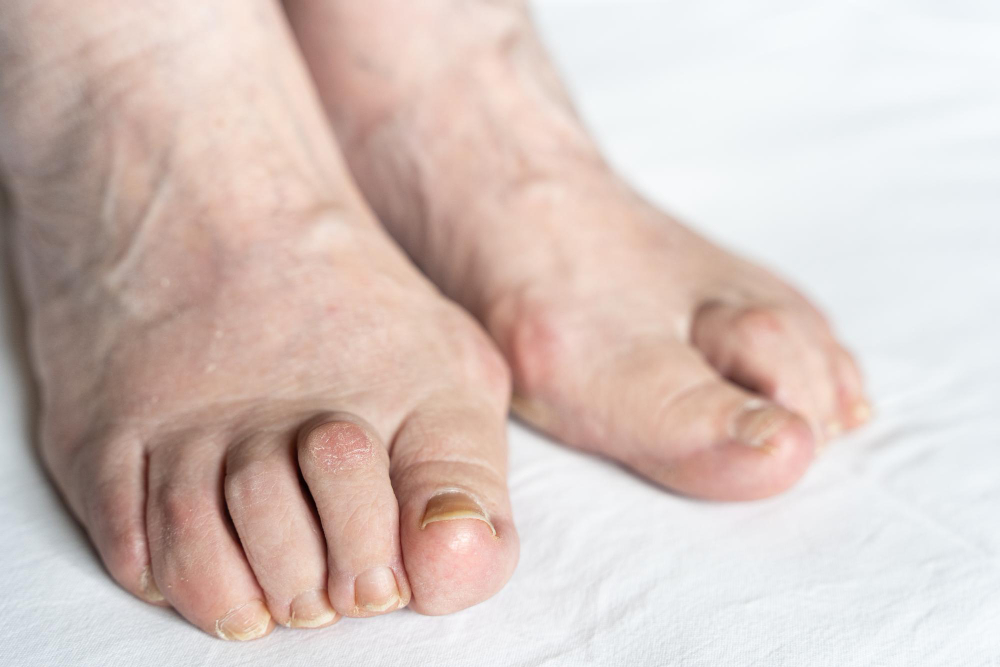
A bunion is a bony bump that forms at the joint at the base of the big toe. This enlargement of the joint can lead to significant pain, disfigurement, and difficulty walking. As the joint swells and shifts, it may cause the other toes to crowd together, leading to additional foot problems. While bunions are often considered a minor condition, early diagnosis and treatment can greatly improve foot comfort and prevent progression.
Request an AppointmentCauses of Bunions
Bunions develop due to prolonged pressure on the big toe joint, which causes the toe to shift inward toward the other toes. Common causes include:
- Foot structure abnormalities, often inherited
- Arthritis and other inflammatory joint conditions
- Poor footwear choices, such as high heels or tight, narrow shoes that force the toes into unnatural positions
Symptoms of Bunions
Bunions may cause a variety of symptoms, including:
- A visible bump at the base of the big toe
- Pain, swelling, and redness around the joint
- Thickened skin or corns and calluses between the toes
- Hammertoes (bent or curled toes)
- Ingrown toenails
- Limited movement of the big toe
- Difficulty wearing shoes due to the altered shape of the foot
Bunion Treatment Options
Treatment depends on the severity of the bunion and the level of discomfort. In mild cases, non-surgical options are often sufficient.
Non-Surgical Treatments
- Wearing roomier, more supportive footwear
- Using custom orthotic inserts to reduce pressure on the bunion
- Applying ice to reduce swelling
- Taking over-the-counter anti-inflammatory medications
- Using padding or splints to cushion the affected area and align the toe
Surgical Treatment
Surgery may be recommended for more severe cases or if conservative measures do not provide relief. Surgical options focus on realigning the toe, removing the bony bump, and correcting any associated deformities.
When to See a Doctor
If you’re experiencing persistent foot pain or notice the development of a bunion, consult with a podiatrist or orthopedic specialist. Early intervention can help manage symptoms, prevent progression, and avoid the need for more invasive treatment later on.